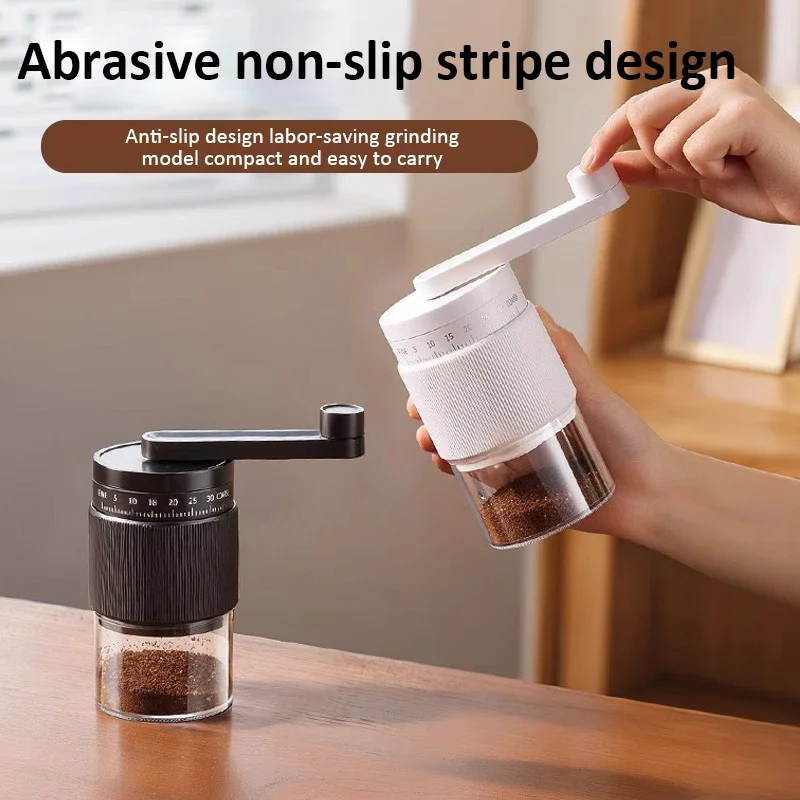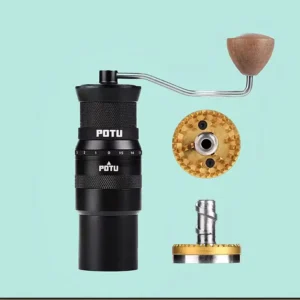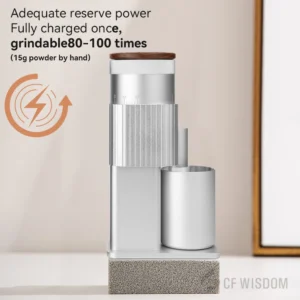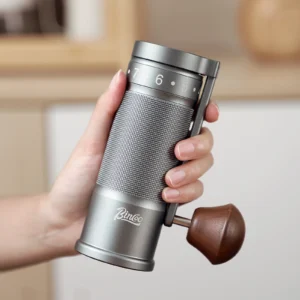Understanding Why Espresso Grind Matters
Espresso is a unique brewing method that relies on forcing hot, pressurized water through tightly packed coffee grounds. Unlike other brewing methods, espresso requires a specific grind size to create the perfect balance of resistance and extraction. This relationship between grind size and brewing is fundamental to creating great espresso.
When water meets coffee grounds, it extracts flavor compounds at different rates. The size of your coffee particles directly impacts how quickly and efficiently this extraction happens. Finer grounds have more surface area exposed to water, leading to faster extraction and more resistance to water flow. Coarser grounds have less surface area, creating less resistance and slower extraction of flavors.
What makes espresso grinding particularly challenging is its sensitivity. Even tiny adjustments to your grind setting can dramatically change how your shot flows and tastes. A change of just one small notch on many grinders can transform a perfect shot into one that’s either painfully slow or much too fast.
Finding the correct espresso grind is about creating the ideal environment for pressurized water to extract the perfect balance of flavors in approximately 25-30 seconds. This fundamental concept is the cornerstone of mastering espresso precision grind settings, and it affects everything from flow rate to crema development to the ultimate flavor in your cup. The relationship between espresso grind settings and shot quality is perhaps the most critical variable you’ll need to master.
The Visual and Tactile Characteristics of Ideal Espresso Grind
When perfectly ground for espresso, coffee has distinctive visual and tactile properties that help identify whether you’re in the right range before brewing your shot.
Visually, ideal espresso ground coffee resembles fine table salt or granulated sugar. The particles should be noticeably finer than what you’d use for drip coffee but not as powdery as flour or powdered sugar. When looking closely, you should still be able to distinguish individual particles, though they’ll be quite small.
When you feel properly ground espresso between your fingers, you’ll notice:
– A slightly gritty texture, finer than sand but not completely smooth
– A tendency to clump together naturally due to the oils and static electricity
– Some resistance when rubbed between your fingers, but not completely powder-like
The “pinch test” can help assess your grind: take a small pinch between your thumb and forefinger and gently press. The grounds should stick together somewhat but still break apart when disturbed – not completely compress into a solid mass or immediately fall apart.
Espresso grinds typically fall in the 200-400 micron range in terms of particle size. However, these specifications are guidelines rather than absolute rules. The ideal espresso grind texture varies somewhat depending on your specific beans, roast level, machine, and desired flavor profile.
The Science Behind Extraction: How Grind Size Affects Your Shot
The extraction process in espresso brewing is a complex interaction between water, pressure, temperature, and coffee particles. Understanding this science helps explain why grind size is so crucial.
When pressurized water meets coffee grounds, it begins dissolving soluble compounds in a specific order. First come the acids and fruity notes, followed by sugars and balanced flavors, and finally the bitter compounds. The goal is to extract enough of the desirable middle compounds without over-extracting the harsh bitter elements or under-extracting and getting only sour notes.
Grind size directly controls this process through three main mechanisms:
Resistance: Finer particles pack together more tightly, creating resistance that builds pressure and slows flow rate.
Surface area: Finer grinding creates more total surface area for the same weight of coffee, allowing water to interact with more coffee simultaneously.
Extraction efficiency: Smaller particles have shorter internal pathways, meaning compounds at the center can be extracted more quickly and completely.
The distribution of particle sizes also matters significantly. Even with the correct average size, having too many fines (very small particles) can lead to over-extraction and bitterness, while having too many boulders (large particles) can cause under-extraction and sourness. This is why quality grinders that produce consistent particle sizes are essential for espresso.
Research has shown that proper espresso extraction typically removes 18-22% of the coffee’s mass as soluble compounds. How grind size affects espresso is directly tied to this extraction percentage – too fine and you exceed this range, too coarse and you fall below it.
Recognizing Common Extraction Problems
Being able to identify extraction issues is crucial for adjusting your grind settings correctly. Here’s how to recognize the most common problems:
| Under-extraction (Grind Too Coarse) | Over-extraction (Grind Too Fine) |
|---|---|
| Shot flows too quickly (under 20 seconds) | Shot flows too slowly (over 35 seconds) |
| Watery appearance with thin, pale crema | Dark crema with large bubbles that dissipates quickly |
| Predominantly sour, sharp flavors | Predominantly bitter, harsh flavors |
| Weak body, lacks richness | Overly intense, potentially ashy finish |
| Shot appears blonde or pale too early | Shot may start very dark and dribble slowly |
A properly extracted espresso should display:
– Even, steady flow that resembles warm honey
– Rich, caramel-colored crema with fine texture
– Balanced flavor with pleasant acidity, sweetness, and minimal bitterness
– Full body with lingering pleasant aftertaste
– Total extraction time of approximately 25-30 seconds
The visual cues are particularly valuable for beginners. Under-extracted shots often “blonde” (turn pale yellow) very early in the extraction, while over-extracted shots may start with very dark droplets that barely flow. Following the 30-second espresso rule provides a good starting framework, though this may vary slightly based on your specific setup and beans.
Remember that while grind size is often the culprit, other factors like tamping pressure, dose weight, and distribution can also cause similar symptoms. The key is to change one variable at a time to isolate the true cause of extraction problems.
Step-by-Step Guide to Finding Your Perfect Grind Setting
Finding your ideal espresso grind setting takes patience and methodology. Follow this approach to systematically discover the perfect setting for your setup:
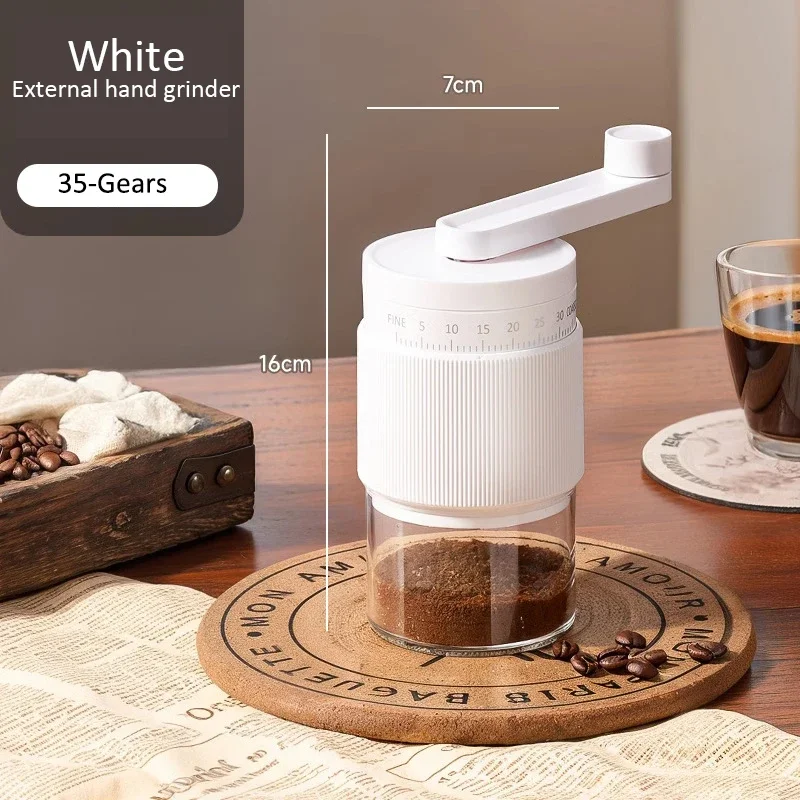
Prepare your workspace and materials
– Use freshly roasted beans (ideally 7-14 days after roast date)
– Clean your grinder, portafilter, and machine thoroughly
– Have a scale, timer, and notebook ready for tracking adjustmentsEstablish a baseline setting
– For stepped grinders: Start at the finest espresso setting
– For stepless grinders: Begin slightly coarser than where the burrs touch (when you hear them chirping)
– If your grinder has an espresso range, start in the middle of that rangePull a test shot
– Dose consistently (typically 18g for a double shot)
– Tamp with even, consistent pressure
– Measure the time from when you start the shot until you reach your target yield (typically 36g for a 1:2 ratio)Evaluate and adjust
– If the shot runs too quickly (under 20 seconds): Adjust finer by 1-2 settings
– If the shot runs too slowly (over 35 seconds): Adjust coarser by 1-2 settings
– If the machine chokes (no flow): Make a more significant coarser adjustmentRepeat with small incremental changes
– Make one adjustment at a time
– Keep all other variables consistent (dose, tamp, temperature)
– Pull another shot and evaluate againFine-tune based on taste
– Once you’re in the 25-30 second range, make minor adjustments based on taste
– Too sour? Go slightly finer
– Too bitter? Go slightly coarser
– Aim for balance between sweetness, acidity, and bodyDocument your findings
– Record the setting that works best
– Note the specific beans and roast level used
– This creates a reference point for future adjustments
The process of mastering perfect espresso adjustment requires patience. Don’t be discouraged if it takes 5-10 attempts to find the sweet spot. Once you’ve established a baseline for one coffee, you’ll have a much better starting point for future beans.
For maximum precision and control over your espresso grinding, consider investing in fine adjustment hand grinders designed specifically for espresso. These tools offer the precision necessary for perfect extraction.
Essential Equipment for Precise Espresso Grinding
Creating consistent, precise espresso grinds requires the right equipment. Not all coffee grinders are capable of the fine, consistent grinding that espresso demands.
The most fundamental requirement is a quality burr grinder rather than a blade grinder. Here’s why:
- Burr grinders crush beans between two surfaces (burrs) set at a precise distance, creating uniform particle sizes
- Blade grinders randomly chop beans with spinning blades, creating inconsistent particle sizes that extract unevenly
Within burr grinders, there are important distinctions:
- Flat burrs produce very consistent particle sizes and work well for espresso, though they can retain more grounds between uses
- Conical burrs can generate slightly more particle size variation (which some prefer for certain flavor profiles) and typically generate less heat
Key features that significantly impact espresso grinding quality include:
- Adjustment mechanism: Stepless grinders allow infinite tiny adjustments, while stepped grinders move in preset increments
- Grind retention: Low retention designs minimize waste and prevent stale grounds from mixing with fresh ones
- Burr alignment: Precisely machined and aligned burrs create more consistent particle sizes
- Burr size: Larger burrs typically provide more consistency and less heat generation
- Material quality: Hardened steel or ceramic burrs maintain their edge longer
While budget is always a consideration, espresso grinding is one area where quality equipment makes a dramatic difference in results. Manual coffee burr grinders often provide excellent value, offering precision sometimes exceeding that of electric grinders in the same price range.
Key Variables That Affect Your Ideal Grind Setting
Understanding the factors that influence your optimal espresso grind setting helps you adapt to changing conditions and different coffees.
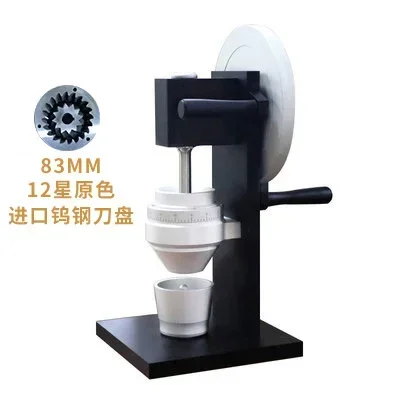
Coffee Bean Characteristics
Roast Level
– Darker roasts are more brittle and extract more easily, typically requiring a slightly coarser grind
– Lighter roasts are denser and harder, often requiring a finer grind to achieve proper extraction
– Medium roasts generally fall in between these extremes
Origin and Processing Method
– Dense, high-altitude beans often need finer grinding
– Natural processed coffees may extract more easily than washed coffees
– Single-origin beans frequently require different settings than blends
Age and Freshness
– Fresh beans contain more CO2 which creates resistance during extraction, often requiring a slightly coarser grind
– As beans age (beyond 2-3 weeks post-roast), they typically need progressively finer grinding
– Very fresh beans (1-3 days post-roast) may be too gassy for consistent extraction
Espresso Machine Variables
Pressure Settings
– Higher pressure machines (10+ bar) may require coarser grinds
– Machines with pressure profiling allow for adaptation to different grind sizes
– Lever machines with declining pressure curves often work better with slightly finer grinds
Basket Size and Type
– Larger baskets (18g+) may need coarser grinds than smaller baskets
– Precision baskets with evenly distributed holes often require finer grinding
– Pressurized baskets require significantly coarser grinds than standard baskets
Temperature Considerations
– Higher brew temperatures extract more quickly, sometimes requiring coarser grinding
– Lower temperatures extract more slowly, potentially needing finer grinding
Environmental Factors
Humidity
– Higher humidity can cause grounds to absorb moisture and extract differently
– Seasonal changes often require grind adjustments
– Climate-controlled environments help maintain consistency
The perfect tool for handling these variables is a grinder with precise, repeatable adjustments. Manual espresso grinders are designed to provide the fine control needed to account for these changing factors.
Advanced Troubleshooting: Solving Common Espresso Grind Problems
Even when your basic grind size is correct, espresso extraction can still suffer from more subtle issues. Here’s how to identify and solve common problems:
Channeling and Uneven Extraction
Problem: Water finds paths of least resistance through the coffee puck, extracting some areas more than others.
Signs:
– Multiple streams from the portafilter instead of one centered flow
– “Blonding” occurs early in some areas but not others
– Puck shows holes or cracks after extraction
Solutions:
– Ensure your distribution is even before tamping
– Consider using a distribution tool to level the grounds
– Check for clumping in your grounds and break them up if necessary
– Maintain consistent tamping pressure and technique
Inconsistent Shots With Same Grind Setting
Problem: Despite using the same grind setting, shots run faster or slower between attempts.
Signs:
– Shot times vary by more than 3-5 seconds between attempts
– Taste varies significantly between shots
– Flow rate changes visibly from one shot to the next
Solutions:
– Check for grinder retention and purge between adjustments
– Ensure consistent dosing weight using a scale
– Control for temperature stability in your machine
– Check for proper burr alignment in your grinder
Excessive Clumping
Problem: Grounds stick together in clumps, creating uneven density in the puck.
Signs:
– Visible clumps in the portafilter
– Difficulty distributing grounds evenly
– Uneven extraction despite good technique
Solutions:
– Reduce static by adding a tiny spritz of water to beans (RDT method)
– Consider slightly coarser grinding if possible
– Use distribution techniques that break up clumps effectively
– Check grinder burrs for wear or alignment issues
Precision manual grinders often provide solutions to these issues through better build quality, reduced retention, and more consistent particle size distribution. These advantages lead to fewer extraction problems even when working with challenging beans or environmental conditions.
Adapting Your Grind for Different Espresso Styles
The definition of “correct” espresso grind varies significantly depending on the style of espresso you’re aiming to create. Each tradition has its own ideals:
Traditional Italian Espresso
- Typically uses medium-dark to dark roasts
- Often employs a slightly coarser grind within the espresso range
- Aims for 25-30 second extraction with 1:2 brew ratio (e.g., 18g in, 36g out)
- Creates a bold, rich shot with noticeable bitterness and substantial body
Modern Light-Roast Espresso
- Uses lighter roasted specialty coffee
- Generally requires a finer grind to properly extract
- May use longer extraction times (28-35 seconds)
- Aims to highlight acidity and complex flavor notes
- Often employs higher brew ratios (1:2.5 or 1:3) for balance
Ristretto vs. Lungo
- Ristretto (restricted shot): Uses the same grind or slightly finer with less yield (1:1 or 1:1.5 ratio)
- Lungo (long shot): Uses the same grind or slightly coarser with more yield (1:3 or 1:4 ratio)
- Both adjust extraction time accordingly to maintain proper flavor development
Specialty Coffee Approach
- Focuses on bean-specific adjustment rather than standard parameters
- May use unconventional ratios based on specific bean characteristics
- Often employs higher doses (18-21g) than traditional Italian style (14-16g)
- Adjusts grind to highlight specific desirable flavor attributes
The ultimate espresso grind size chart provides detailed reference points for different espresso styles, giving you starting points for various approaches. The most important principle is consistency within your chosen style, allowing you to make meaningful comparisons between adjustments.
How Bean Freshness Impacts Your Grind Settings
Coffee beans undergo significant changes in the days and weeks after roasting, directly affecting how you should grind them for espresso.
The most dramatic change in fresh beans is carbon dioxide release (degassing). Immediately after roasting, beans contain substantial trapped CO2 that gradually escapes over time. This degassing process has several important impacts on espresso grinding:
Very Fresh Beans (1-5 days from roast)
– High gas content creates additional resistance during extraction
– May require slightly coarser grinding to compensate
– Often produce inconsistent shots due to uneven degassing
– Can create excessive crema that dissipates quickly
Prime Window (7-21 days from roast)
– Ideal balance between freshness and stability
– More consistent extraction behavior
– Often requires your “standard” grind setting
– Produces balanced crema and flavor development
Aging Beans (3-5 weeks from roast)
– Reduced CO2 content leads to less resistance during extraction
– Typically require progressively finer grinding as they age
– May produce less pronounced crema
– Can develop more subtle, nuanced flavors in some cases
Proper storage significantly affects how quickly these changes occur. Beans stored in airtight containers away from light, heat, and oxygen will maintain their freshness longer than those exposed to air or stored improperly.
To maintain consistency in your espresso, be prepared to adjust your grind slightly finer as your beans age. Manual coffee grinders for espresso offer the precision needed to make these subtle adjustments as beans change over time.
Daily Grinder Maintenance for Consistent Results
Maintaining your grinder is essential for consistent espresso quality. Even the finest grinder will perform poorly if not properly cleaned and maintained.
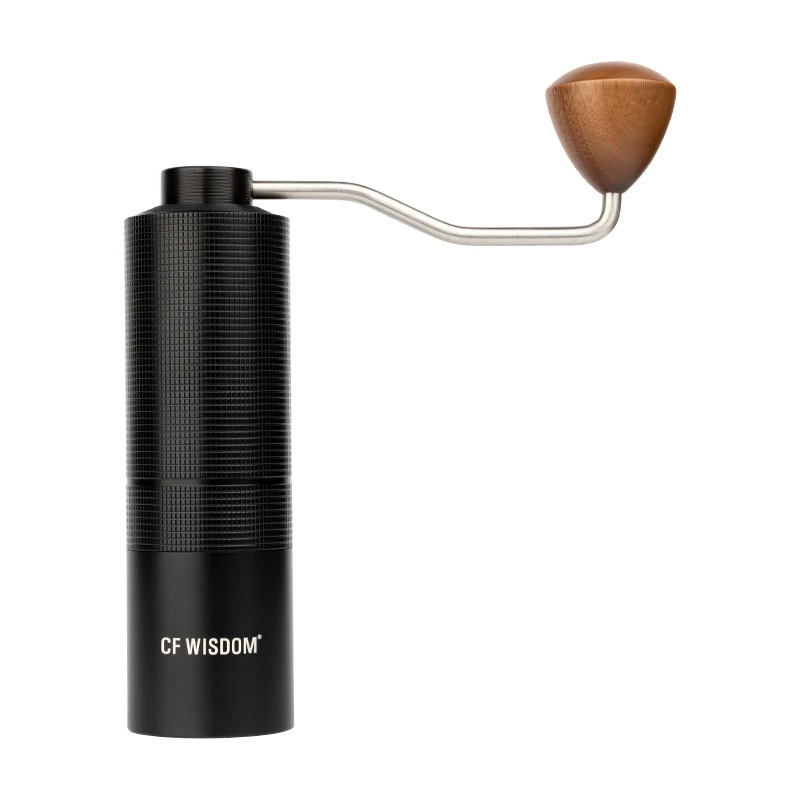
Daily Maintenance Tasks
- Brush out the grinding chamber to remove loose grounds
- Clean the grounds bin or collection area thoroughly
- Wipe down external surfaces to prevent coffee oil buildup
- Check adjustment mechanisms for smooth operation
Weekly Maintenance Tasks
- More thoroughly brush out the burr chamber
- Check for signs of grounds building up in adjustment threads
- Clean the hopper if your grinder has one
- Verify that grinder calibration hasn’t shifted
Monthly Maintenance Tasks
- Remove and clean burrs according to manufacturer instructions
- Clear any compacted coffee from hard-to-reach areas
- Check burrs for signs of wear or damage
- Re-calibrate if necessary
Signs that your grinder needs maintenance include:
– Inconsistent grind size despite using the same setting
– Unusual noises during grinding
– Grounds becoming stuck in the grinding chamber
– Visible coffee oil buildup on burrs or in the grind path
– Changes in the flavor of your espresso
Simple cleaning techniques like using grinder cleaning pellets, dry rice (for some models), or small stiff brushes can significantly extend the life of your grinder and improve consistency. Regular maintenance is particularly important for espresso grinding, where small variations have outsized impacts on extraction quality.
Stainless steel manual coffee grinders are often easier to maintain than complex electric models, as they can be easily disassembled for thorough cleaning.
Fine Adjustment Hand Grinder, Precision Manual Grinder, Travel Coffee Grinder
Price range: $185.11 through $494.63 Select options This product has multiple variants. The options may be chosen on the product pageHand Burr Grinder, Hand Crank Coffee Grinder, Manual Espresso Grinder, Portable Coffee Grinder
Price range: $262.72 through $300.22 Select options This product has multiple variants. The options may be chosen on the product pageManual Burr Mill, Manual Coffee Grinder Stainless Steel, Manual Coffee Mill Grinder, Mechanical Coffee Grinder
Price range: $127.26 through $130.32 Select options This product has multiple variants. The options may be chosen on the product pageHand Burr Grinder, Manual Coffee Grinder Stainless Steel, Precision Manual Grinder
Price range: $183.64 through $187.52 Select options This product has multiple variants. The options may be chosen on the product page
FAQ: Common Questions About Espresso Grind Settings
Can I use pre-ground espresso coffee?
Pre-ground coffee is generally not recommended for espresso. It begins losing freshness immediately after grinding and cannot be adjusted to suit your specific machine. In a pinch, it may work in pressurized portafilters, but for standard baskets, freshly ground coffee is essential for quality results.
How often should I adjust my grind setting?
You’ll need to adjust your grind whenever you change coffee beans, when beans age significantly, when environmental conditions change dramatically, or if you modify your brewing recipe. Many enthusiasts make small adjustments daily based on taste and extraction observations.
Why does my grind setting change over time?
Grind settings appear to “drift” over time due to several factors: beans aging and drying out, burrs wearing in, environmental humidity changes, and temperature fluctuations. This is normal and requires ongoing small adjustments.
Is there a universal “best” grinder for espresso?
There is no single “best” grinder, as different users have different priorities. Some value consistency above all, others prioritize adjustability, while others focus on retention or ease of use. Quality burrs and precise adjustment capabilities are universal requirements, however.
How important is grind consistency compared to grind size?
Both are crucial. The right average particle size ensures proper flow rate and extraction time, while consistency (uniform particle size) ensures even extraction throughout the coffee puck. A grinder that produces the right size but with poor consistency will still yield subpar results.
When to Seek Professional Help with Your Grinder
While most grinder issues can be resolved through maintenance and adjustment, certain problems require professional attention. Knowing when to seek help can save you frustration and potentially extend the life of your equipment.
Warning signs that indicate professional service may be needed:
- Significant metal-on-metal sounds that persist after cleaning
- Visible damage to burrs such as chips or excessive wear patterns
- Inability to produce consistent grind size despite proper maintenance
- Excessive heat generation during normal operation
- Sudden changes in motor sound or grinding effectiveness
Typical burr lifespan varies widely by material and usage. Steel burrs generally last for grinding 500-1000 pounds of coffee before replacement becomes necessary. Ceramic burrs may last longer but are more susceptible to damage from foreign objects.
Consider professional servicing if your grinder has been in regular use for several years without burr replacement, or if you notice your espresso quality declining despite proper technique and fresh beans.
At Savor Suite, we understand the critical relationship between grinding precision and espresso quality. That’s why we focus exclusively on offering manual grinders that deliver exceptional consistency and adjustment capability. The right grinder forms the foundation of your espresso journey, allowing you to discover the perfect grind setting for your unique preferences.

